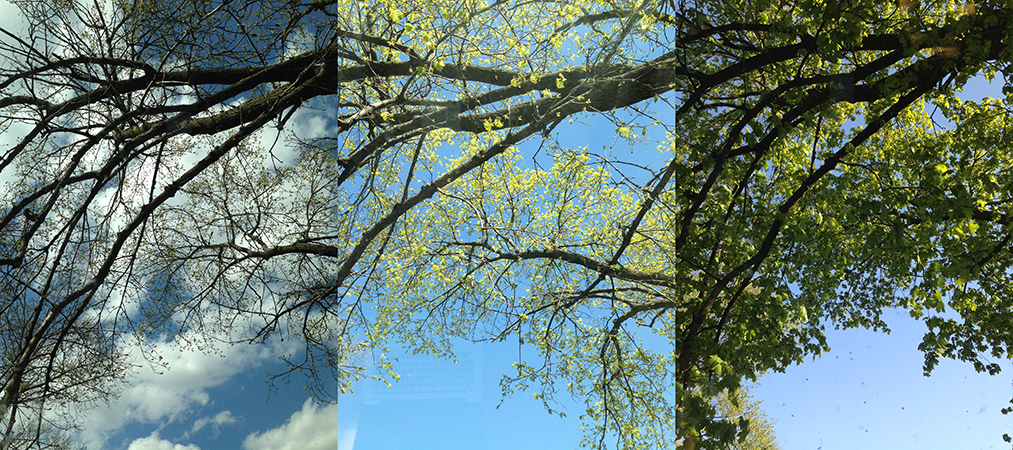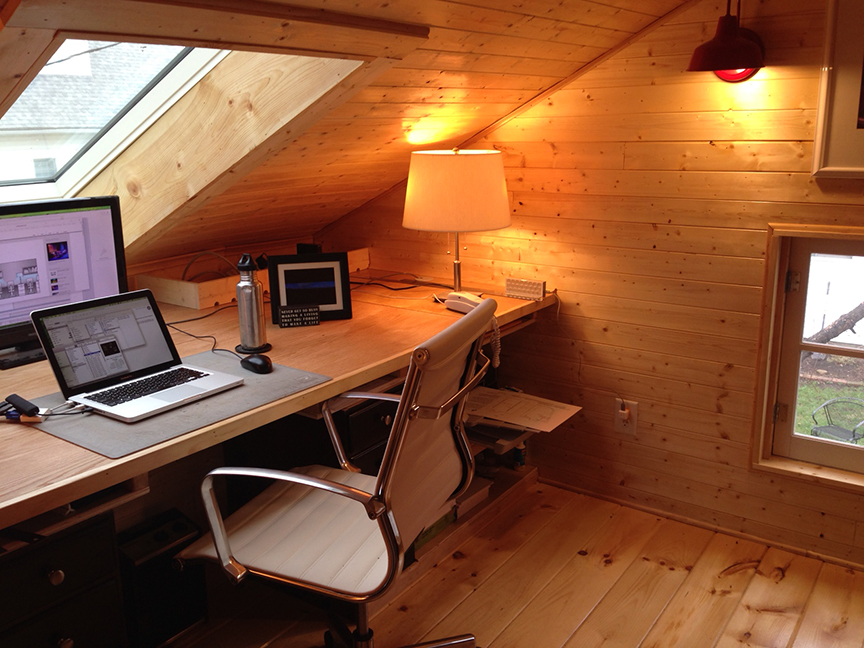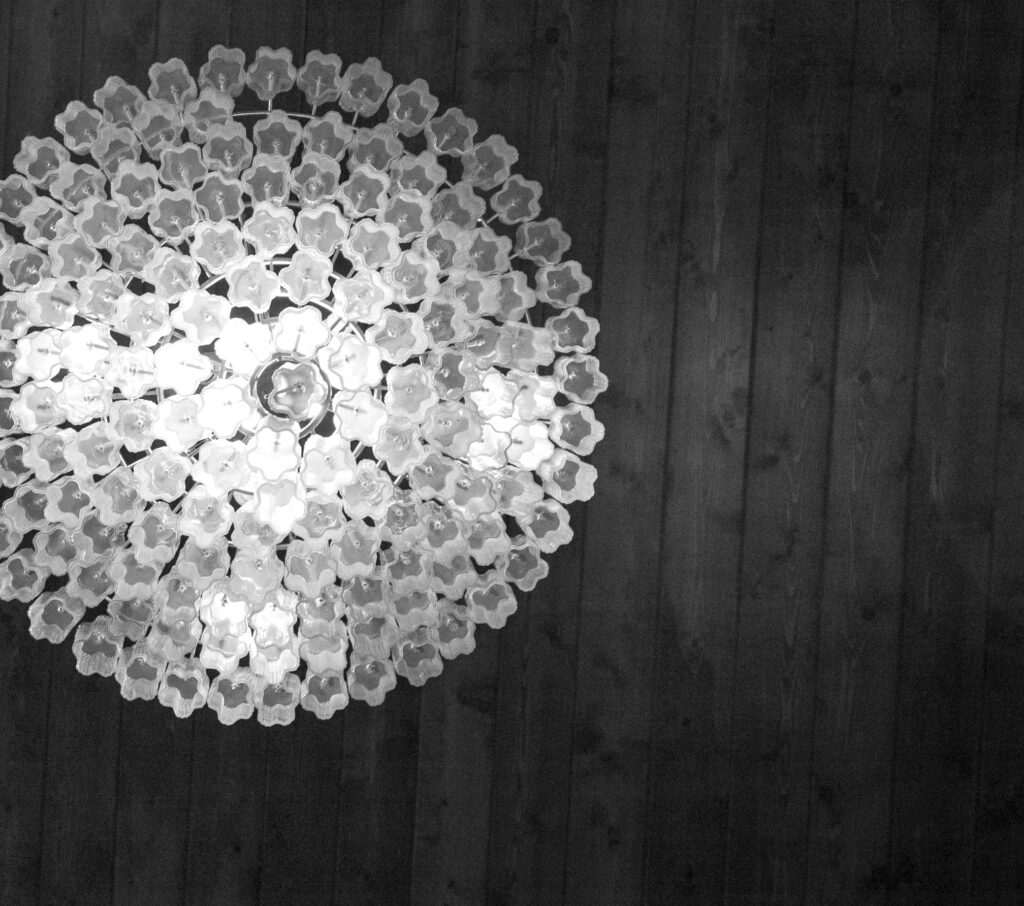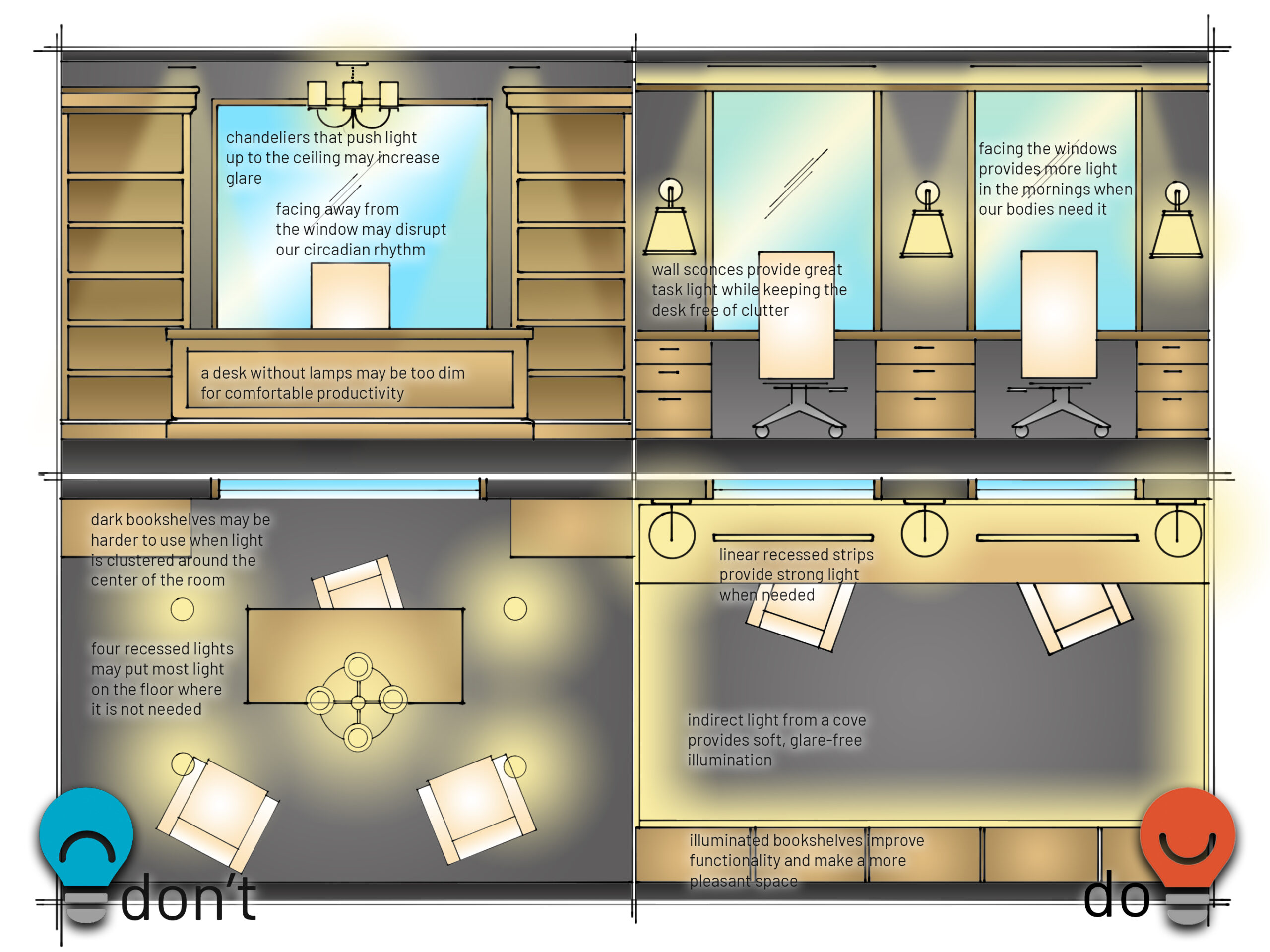It’s undeniable: we’re working at home more than ever. The US Census tells us over 8 million work entirely from home and a Gallup survey reveals that at least 43% of employed Americans said they spend at least some time working remotely. Add in those who pay their bills at home, use a computer to communicate with families and friends or homeschool their children and the number of us spending some time at a desk at home is higher still. Are we lighting these offices and desks adequately?
I started out as a commercial lighting designer and offices were the largest projects we handled. That means we spent a lot of time getting office lighting just right- no one wants to make a mistake when the project is over one million square feet. We tested fixtures, studied recommended practices and performed detailed computerized lighting calculations to predict the results before construction.
Now I am focused on residential lighting design and, of course, I do a great deal of work from my home office. I cut a hole in the roof to add more natural light, put lamps on my long workspace that provide good task light, added sconces and shelf lighting to make the space feel comfortable and sprinkled in recessed downlights to fill in the gaps. Now we are moving to a new home and with it comes an opportunity to improve my home office lighting- or to make it worse.

Daylight
The best commercial office designs now include large windows, atriums and skylights to introduce daylight to as many desks as possible, and home should be no different. Daylight- and plenty of it- is especially critical during the first half of the day when our eyes need extra brightness to keep us healthy. Windows and skylights will also give us views outdoors that can reduce eyestrain and make our work environment both enjoyable and more productive.
Position desks at windows and, if possible, avoid putting your back to the window.

Task Light
We need light to help us see what we are doing, often referred to as task light. Adjustable lamps can help us get bright light just where we need it and under-cabinet lights can provide good light in office/desk alcoves. This style works especially well for kitchen desks.
Table lamps can also be great task light while providing light that helps us feel better, too. Soft light through shades triggers a positive emotional response much like candlelight. And light exiting out the top bounces of the ceilings helps reduce glare.
Changeable Light
Research in the field of circadian rhythm continues to indicate that spending long hours in static lighting environments can be harmful to our health. Our bodies need change- we need more light in the mornings and less in the evenings. If your work at home occurs on a varied schedule, consider planning light that changes and adapts to your needs and time of day. Multiple layers of light, indirect light, task light and dimmers can all help you customize light to your use.

Comfort Light
Many of use our home offices for work, but that does not mean they should be cold, sterile and inhospitable like yesterday’s commercial spaces. A home office should also be comfortable, and light can help set the scene for a relaxing work environment. Accent lights, lamps, pendants and wall sconces are all possibilities for increasing the comfort and making the office a place that does double duty.
